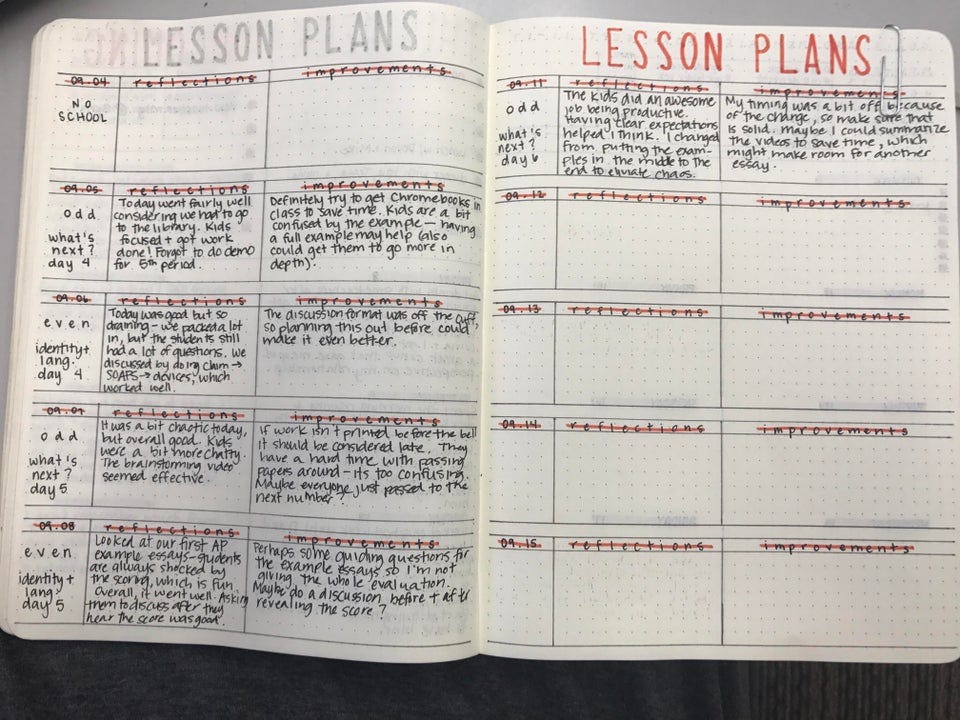Tip: Systematic Post-Class Reflection
These small notes & your reflections on them will coalesce into valuable insights about your teaching and your students’ learning process.
One of the most effective practices to improve instruction is reflecting on what worked, what you would change, and what just crashed and burned. When I first started teaching, I had a paper notebook much like the one below for planning what I would do with each class session. One column would describe, briefly, the plan for each class meeting, while a second column was a space to record what actually happened in class and thoughts for next time.
I tried very hard to complete the reflections immediately after each class meeting; teaching multiple sections of the same level meant that I often had several more attempts to make changes, in addition to saving the log for the next semester.
As technology improved, I transitioned this log to a Google doc, based on the class pacing guide I provide students. Their version outlines topics, due dates, and assigned readings by week; my version adds on questions to ask, announcements to share in class, and space for my post-class reflections. I continue to maintain a pacing and reflection document that I use to capture thoughts during and immediately after each class session.
The reason why this immediate post-session reflection is so important - not just that the reflection happens, but that it’s recorded - is that it helps us to focus not on what we did, but on what the students did. You may want to answer questions like:
What did my students learn today? (This is different than what I planned to teach, and the difference is key!)
What supports helped them?
What barriers did they (or I) experience in the process?
What specific examples from today will help me to remember and understand these supports/barriers when I return to the journal next semester?
I use a google doc, but you could record voice memo and email it to yourself, write notes on stickies and add them to the paper textbook - there are many ways, high- and low-tech, to incorporate systematic post-class reflection. The key is that you make it a consistent habit, even if just to jot down a few notes like: “Do not ever do activity X again!” With time, these small notes and, importantly, your reflections on them will coalesce into valuable insights about your teaching and your students’ learning process.



